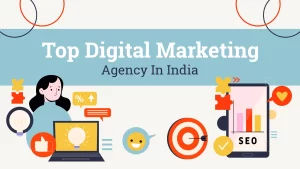To combat spammers, Google officially released the Google October 2022 Spam Update in all of the major languages. According to Google, the October Spam Update will progressively implement its algorithmic changes to boost Digital Marketing company. In reality, Google’s programmers worked tirelessly for a full year to prepare it. Google frequently develops spam upgrades to weed out irrelevant search results.
In this essay, we’ll discuss the Google October spam improvements. The specifics are listed below. So let’s get going.
Google’s October 2022 spam update: Digital Marketing Company
The “spam update,” a fresh change to Google’s search engine algorithm, has been made public. Google refers to this update as the “October 2022 Spam Update.” Google would take about a week to launch fully and start showing up in search results. According to Google, this is a global update that affects all languages. Google made it crystal clear that spam needs to be eliminated. Google constantly strives to identify spam emails through the numerous upgrades and enhancements it makes on a regular basis. The “Spam Brain” AI-based system, developed by Google, uses methodologies and AI to help identify spam and even recognise all the different sorts of mail that are continually appearing in random mail.
If your site changes in any way following the upgrade, be aware that you should study and familiarise yourself with Google’s spam policy to prevent breaking any restrictions.
Google may penalise sites that violate its spam regulations by lowering their rankings and, in rare cases, removing them entirely from search results.
Google is highly harsh with individuals who employ spam tricks because it fights spam websites, those who produce spam mail, labels spam-using websites as low-quality sites, and even deceives users to get their personal information or lure them into installing applications that could harm them.
A spam update is what?
These changes concentrate on deleting outcomes from questionable websites that attempt to deceive search engines.
A list of all the behaviours that potentially punish this kind of update has been provided by Google. The following are often the sites that receive the most targeted spam:
Namelessness: Displaying to the user content that differs from that displayed to the search engine.
Stuffing our pages with keywords makes it difficult for a real user to understand the content of our pages.
Recurring pages are many pages that share the same information and are designed to draw traffic and users without offering any advantages.
Copied content, or taking another site’s content without adding anything new, is considered to be stealing rather than producing fresh, original information.
Don’t worry if you don’t employ the aforementioned techniques and your page satisfies with Google’s quality standards.
This year, Google has released several updates to better serve users. The most significant of these are the helpful content update of August 2022, the core algorithm update of September 2022, and the Google product reviews update of September 2022, which emphasises providing content that benefits the user and aims to search intent.
How is spam defined by Google?
Websites that use unethical tactics to rank well in search engine results are known as spam sites. These techniques, for example, include keyword stuffing, cloaking, etc. The repeated use of the same terms on a website is referred to as “keyword stuffing.”
What’s next? The Google crawler will also include websites that attempt to display irrelevant content (commonly known as “cloaking”) on its spam list. The most harmful spam sites are those that send consumers to bad links that lead to frauds. To get rid of them, Google will pay close attention.
How Do You Target Spam on Google?
Google has a defined procedure for dealing with spammy behaviour on websites that don’t adhere to its rules. How? Read on.
Step 1: Spam detection
First off, Google’s automatic processes identify most spam and prevent it from rising to the top of SERPs. It resembles how a strong email system prevents spam from overcrowding the inbox.
Step 2: Handling Spam Manually
Not all spam can always be distinguished. The remainder of the spam is therefore manually handled by Google’s spam removal staff. If any pages violate the webmaster guidelines, they are reviewed and flagged. In addition to taking manual action on content, Google’s staff works to notify the author by assisting them in resolving problems.
Step 3: Receives the Requests for Reconsideration
After the creator fixes any faults found, they can ask Google to reconsider their decision. All inquiries are processed by Google’s spam team.
Let’s study about the most recent spam update now that you are familiar with spam sites and how Google’s crawler attacks them.
Conclusion
In the end, Google wants to support and encourage an excellent web environment. And another step in achieving this goal is Google’s Spam Update. Therefore, it is the duty of businesses to keep their website sane with original information.
If you don’t, there’s a chance you’ll rank poorly in search engine results. Which is worse? Google may remove your website from its indexing.
Google considers the dissemination of personal data about a company or person with the aim of contaminating the user’s computer with harmful software or files to be spam. The release of the October Spam Update will put an end to the identification of phishing attacks by fake websites. Google will track down anyone who tries to employ tricks to show up in the top search results. Some consumers have a bad opinion of thin web pages that don’t satisfy Google’s definition of spam. Thin content is more likely to be penalised by Google’s helpful content algorithm. In actuality, hackers constitute a threat to websites that follow Google’s Search Essentials. Unsecure websites may unwittingly deliver spam to users if they are not properly protected.
If you see a drop in rankings after the October 2022 spam update, you should examine the security of your website and look for warning signs and indicators of a prospective attack. A website’s content is often either deindexed from Google or has its search results decreased when Google inspects it with a spam update.
Google cautions that unless you’re prepared to make the necessary changes to comply with Google’s spam policies, recovering from a lost spam update on your website could take months.
Following Google updates, perform these 10 content quality checks.
Do you keep the reader in mind when writing articles?
Have you consistently worked to add original material to your content?
Are the articles you’re writing in-depth or are they just the bare minimum?
What sets your content apart from the opposition and what makes it unique?
Have you over-optimized the title, description, and content to the exclusion of actual users in order to attract Google bots only?
Do you change the content to attract consumers’ attention?
Does your content have a chance to get backlinks or other natural references?
Does the author of the text possess in-depth subject knowledge?
Do you limit yourself to the subjects you are most knowledgeable in, or do you cover everything?
Do your article’s facts conflict with what science has established?
According to Google’s explanation of the spam update, the term refers to sporadic significant advances in the operation of search spam detection algorithms. It was stated that SpamBrain is an AI-based spam-prevention system, and Google updates the system to improve spam detection and help ensure it captures new types of spam so that the websites may operate as intended.
According to Google, websites that experience a change following a spam update should evaluate their spam policies and make sure they are following them. Websites that break the spam regulations risk having their results ranked lower or even not showing up at all. A site will gain popularity and perform better in search results if it makes improvements and the automated algorithms discover that the site has complied with the spam policies for several months.
Google views low-quality websites that deceive visitors into installing malware or disclosing personal information as spam. Phishing scams, websites that pose as other well-known websites, and anything else with malevolent purpose are examples of various forms of spam.
What Comes Next: Addressing This Update
By adhering to the best practices outlined in Google Search Essentials, websites that offer the finest content marketing services with a positive user experience are rewarded by Google.
You won’t need to worry about the spam update if you adhere to Google Search Essentials’ best practices. However, examine the security measures on your website and search for any potential evidence of attacks. The security flaws on the website allowed hackers to access your website and maybe insert dangerous stuff there.
Google devalues or even removes your website’s content from its index when it discovers any kind of spam content on it. Make sure to scan your website for spam and remove it (if any).
When spam updates harm a website, it takes months for it to recover.










